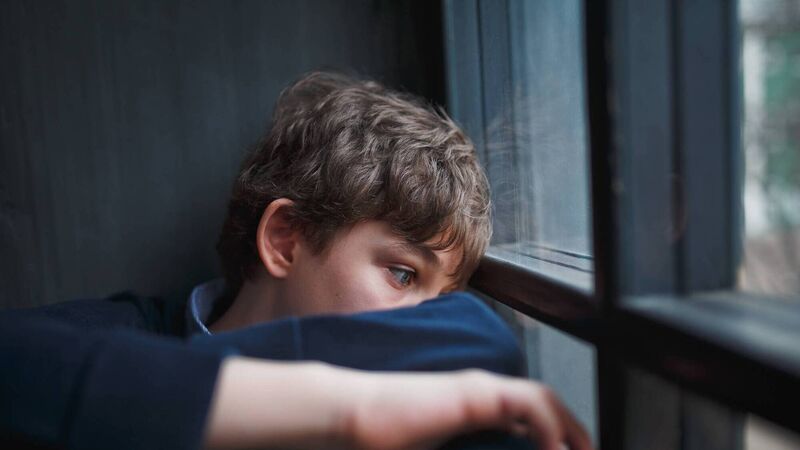Colman Noctor: Taking the panic out of panic attacks for anxious children and parents

Picture: iStock
I'm often asked: 'What is the most common difficulty children face in today’s world?'. My answer is simple, 'anxiety'. But that does not capture the complexity of anxiety, and the many different forms in which it can manifest. Worry is something we all experience from time to time, however, anxiety is specific to the individual and can be difficult to recognise as it can present as social anxiety, performance anxiety, generalised anxiety or panic attacks.
A certain amount of worry is necessary for us to exist. Worry gets us up on time in the morning, it gets us to work on time, it makes us prepare for tasks and drives us to perform. This type of functional worry or surmountable stress is a good thing.
Feelings of worry can be similar to those connected with excitement. Part of the attraction of horror movies, or skydives, is the physical reactions in the body - our heart beats faster, we get 'butterflies' in our stomach, and sense something unknown is about to happen. However, there is a difference between the excitement-based physiological experiences of sitting on a rollercoaster, versus sitting in a classroom dreading that you will be asked a question or have to read aloud. At the funfair, the excitement is understood to be somewhat controlled, and designed to be fun, but in the classroom, there is no such context and so the child feels a threat to their safety.
An interesting study some years ago found that those who enjoyed gory horror movies were affected completely differently when watching a real-life surgical procedure. This suggested that the context is crucially important when it comes to ‘controlled, manufactured anxiety’ and ‘uncontrolled real-life threat’.
Much of our anxiety is related to the lens through which we view the world. Some of us are designed to have a more optimistic outlook on life, whereas others can be pessimistic, seeing the world as a threatening place. Most people function well despite having a ‘threat focused’ view of the world as they do not allow it to impede their lives. However, there is a point when the anxiety dial passes the functional mark and veers into the problematic area, with worry turning to anxiety and stress turning to panic.
It’s key to understand the biology of anxiety. It is believed that the physiological responses of anxiety date back to prehistoric times when we had to fend off wild animals. In this event, our heart learned to beat faster to send blood to our legs, so that we could run away faster. The sweat on our skin made us slippery and therefore harder for the animal to grab. The pupils of our eyes dilated to give us better peripheral vision to check for other potential attackers. This physiological reaction made perfect sense in the context of facing a predatory animal, however, it may not make so much sense if it happens on a Tuesday afternoon during geography class.
Neuroscientists tell us that the amygdala, a cluster of cells found in the centre of the brain, is responsible for these primitive emotional reactions. There are three core responses: fight, flight or freeze. This means our reactions to anxiety can be anger, avoidance or immobilisation.
Panic attacks are one of the most common manifestations of acute anxiety. Also known as panic disorder, a panic attack can happen out of the blue. There is no obvious threat, so they ask themselves why am I experiencing these physiological feelings? A panic attack can be truly terrifying, especially if you do not understand what is happening. This is why an explanation of the underlying physiology is vital in helping to manage a panic attack.
When I am explaining to young people how this works, I use the example of blushing. When we are embarrassed our face goes red. As embarrassment is an emotion it is undeniable proof that our bodies and our emotions are linked. And if we begin to get embarrassed and blush, and someone points it out, our face gets redder. In a similar way, the more catastrophic thoughts we have, the worse the physical feeling gets.
If my amygdala randomly misfires, it releases panic hormones and my heart starts to beat faster and I start to sweat. But because I don’t understand what is happening my brain thinks I am going to die. If I think that I am going to die, then my amygdala releases more and more of the panic hormones, causing my heart to race even faster and I sweat more profusely.
So, the key to managing any mental health symptom is having a good understanding of why it is happening and what you can do to make it better. In the case of a panic attack, it's important to stop the chain of catastrophic thoughts. This is why repeating to yourself phrases such as ‘I know what this is’ and ‘this will pass’ is crucial. This will help the child to stop adding catastrophic thoughts and allow the amygdala to stop releasing panic hormones.
Controlling when panic attacks happen is out of our control, but controlling our responses and catastrophic thoughts is something we can get better at.
If your child is experiencing something similar to panic attacks, it is advisable, first and foremost, that you explain the biological origin of the physical experiences. When we know what we are experiencing it reduces the fear of it exponentially. If you have diabetes and experience a hypoglycaemic episode for the first time you are likely to be very unsettled by it, but after diabetes is explained and you know what to do to limit the frequency and severity of these incidents it immediately becomes less scary. The same is true for panic attacks.
Reassure your child that this is not anything that can harm them, and explain that the manner in which they respond to the feelings of panic will determine whether it’s a short-lived experience or not. So, the key to reducing the release of the hormones that are making your body feel anxious is to manage your thinking. Repeating that ‘I know what this is’ and ‘this will pass’ and controlling your breathing, is the best way to de-activate the misfiring amygdala and subsequent panic attack.
Many people who experience panic attacks may need professional assessment and therapeutic support to understand the root cause but if you have a child experiencing panic attacks and are on a waiting list for psychological support, I hope that the advice in this column is helpful.
- It is worth noting that the HSE runs a panic text hotline, simply text 50808. Childline also offers support on 1800 666666 or text 50101.
- St Patrick’s Mental Health Service operates a support and information line on 01-2493333 for anyone who may need help with panic disorder.










